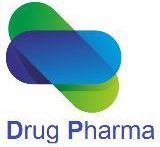
WHAT CAUSES BREAST PAIN?
Breast pain/painful breast (known as mastalgia) has several possible causes. General breast discomfort is common in the second half of a woman’s menstrual cycle and is called cyclical mastalgia.
The pain or discomfort is often related to the menstrual cycle, and may come on about the time ovulation takes place and be greatest just before a period.
It is caused by normal hormonal changes and is not harmful.
OTHER CAUSES ARE:
- pregnancy (breast tenderness tends to be more common during the first trimester)
- after childbirth (breasts may become swollen with milk and painful, and breastfeeding itself may cause breast pain)
- infection (e.g., inflammation of the breast, known as mastitis, or an abscess, both of which may occur after childbirth)
- breast lumps (e.g., in fibrocystic disease; these tend to be more tender just before a menstrual period)
- certain drugs
- weight gain
- poorly fitting bras.
NOTE:
Early breast cancer is usually painless, but all lumps need careful investigation.
IS IT COMMON?
It is a very common problem, with about 2 out of 3 women complaining of breast pain at some stage of their lives. It is most common in the thirties and early forties.
WHAT ARE THE SYMPTOMS?
The pain can vary from very mild to severe. It is usually a heaviness or discomfort in the breasts, while some women experience a prickling or stabbing sensation. The breasts may feel lumpy or quite normal to touch. The breasts may be so tender that hugging and fondling cause distress.
WHAT IS THE TREATMENT?
The first thing to keep in mind is that breast pain is common, and in only 1 case in 200 will cancer be the cause. No treatment may be needed in mild cases and the problem may settle in 3–6 months.
SELF-HELP
- Reduce weight if you are overweight: aim to keep at an ideal weight.
- Reduce or cut out caffeine.
- Follow a nutritious, low-fat diet high in complex carbohydrates.
- Wear good-quality comfortable bras.
- Take a mild analgesic for pain, such as paracetamol or ibuprofen, either by mouth or topical (rubbed onto the breast).
NATURAL MEDICATION
Vitamins may help (although studies have not shown any proven benefit):
- vitamin B1 (thiamine): 100 mg per day
- vitamin B6 (pyridoxine): 100 mg per day
- evening primrose oil capsules: 4 g per day. Use one or a combination of these agents.
DRUG TREATMENT
Your doctor may change your oral contraception or hormone replacement therapy (if you are taking it) or prescribe other hormonal drugs. Be sure to talk with your doctor before taking any medication or supplement.
Report persistent pain or any persistent lumps to your doctor. See your doctor if you have a bloody or clear discharge from your nipple, if your breasts are swollen or hard, or if there are signs of breast infection such as redness in the breast or pus, or if you have a fever
